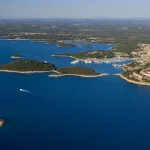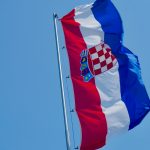As Poslovni Dnevnik/Jadranka Dozan writes, what can be taken from what has been released by the Central Bureau of Statistics (CBS) on the first estimate of GDP for the third quarter of 2021 and the real growth rate of 15.8 percent compared to the same quarter last year (according to seasonally adjusted data), is that most analysts can admit that it exceeded their expectations. The Croatian 2021 tourist results were excellent, and with this being the country’s strongest economic branch, it certainly poured some much needed cash back into the country’s wallet.
Apart from personal consumption, which was mostly in the double-digits, and although the published data of 16 percent also largely exceeded forecasts, some economists will point out that they were pleasantly surprised by the positive contribution of net foreign demand, primarily due to significantly lower growth in the import of goods and services in relation to exports. In the summer months, this is primarily ”stamped” by tourism.
The growth rate of total Croatian exports reached almost 49 percent, while imports of goods and services increased by just 14 percent when compared to the third quarter of last year. Prime Minister Andrej Plenkovic didn’t miss the opportunity to boast about the fact that this is the second highest annual rate of quarterly GDP growth so far (behind the one recorded in the second quarter, of almost 17 percent).
At a press conference, he pointed out that in the first nine months of 2021, Croatia had annual growth of 10.7 percent, which is the highest rate, in his words, since independence. With the message that “the Government will do everything to make the growth at the end of the year reach at least nine percent, he noted that among the EU member states for which data for the third quarter has been made available, Croatia’s 15.8 percent is by far the highest GDP growth.
Admittedly, at this time last year, Croatia also took the lead in the CBS estimates of quarterly GDP, but at a rate of decline. At that time, Croatia was the only country with a double-digit decline in the EU, but it turned out a little later that it was slightly larger down in Greece.
At the level of the whole of 2021, it is almost certain that the Croatian economy will record the highest growth rate to date. Bearing in mind that epidemiological measures were tightened due to the coronavirus crisis at the end of November last year, which ultimately contributed to an annual decline of 7.4 percent in the last quarter, solid growth is also expected for the last quarter of this year. In any case, all indications are that year-round growth could be very close to the double-digit rate. However, even 9 percent growth would mean catching back up with the GDP levels of the pre-crisis 2019 this year, although it was calculated at the beginning of this year that after last year’s sharp decline, we’d have to wait until at least the end of next year.
Although it is now quite certain that Croatia will be in the group of several countries with the highest GDP growth in the EU this year, less impressive is the fact that in 2019 Croatia only managed to exceed the level of GDP from 2008. According to the latest estimate from Government statisticians, growth in the third quarter of 2021 was recorded by all major components of domestic GDP, with the exception of Government spending, which fell by 4.5 percent compared to the third quarter of last year.
The largest contribution to growth came from a 16 percent increase in personal consumption as the largest component, and from the exports of goods and services (with significantly slower growth for imports). With as much as 71.6 percent higher exports of services compared to the three summer months of last year, the exports of goods increased by 13 percent, while the imports of goods increased by 12.4 percent and services increased by 22.3 percent.
Positive rates also continued with gross fixed capital formation, although growth (7.4 percent) was slower than in the previous quarter (18 percent). Observed according to the production method, quarterly gross value added (GVA) recorded an annual increase of 13.5 percent. As expected, the largest contribution was made in the group of activities related to tourism, and Croatian 2021 tourist results have been truly remarkable, primarily due to a lasting favourable epidemiological situation. This allowed Croatia to excel in comparison to its Mediterranean competition.
In the category that unites wholesale and retail trade, transport and storage, as well as accommodation and food preparation and serving activities, GVA increased by almost 40 percent. Positive rates were also achieved in the remaining ten categories, with double-digits also recorded in the following activities: Information and communication (11 percent) and Professional, scientific, technical, administrative and support service activities (16 percent).
For more, check out our business section.











